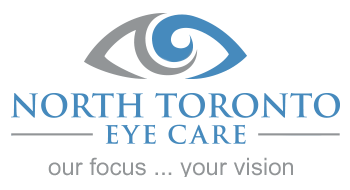Near-Sightedness and Fun in the Sun
An interesting recent article published in American Journal of Ophthalmology found that myopia, or near sightedness, is linked to how much time young adults spend outside. Considering that the prevalence of myopia is on the rise and therefore becoming more and more of a medical issue worldwide as well as a financial burden on patients…
Read MoreCelebrities & Heterochromia
Did you know that the model, actress and singer, Kate Bosworth has a condition known as Heterochromia iridis? This is a fascinating condition where her eyes are actually two different colours. In some cases this anomaly is very noticeable; in others not so much. Some famous women with such an anomaly are among the most…
Read MoreHelping Children See the World!
There are many variables that can affect how well your child performs academically, but vision, above all others, is perhaps the most important. Booking regular optometry appointments for your child is the best way to diagnose and treat any visual complications that could hinder their academic performance. Statistics indicate that one in four children have…
Read MoreLooking at Your Retinas to Look into Your Future: Retina Imaging and Early Detection of Alzheimer’s Disease
The development of Alzheimer’s disease is linked to the presence of beta-amyloid plaques in the brain, which contributes to intracellular neurofibrillary tangles and disrupted cellular activities, leading to neurotoxin inflammation and neuronal death. Detecting the presence of amyloid plaques has traditionally involved highly invasive techniques, often done postmortem. Studies from the past few years have…
Read MoreTreating the Whole Person: Managing Depression Amongst AMD Patients
Age related macular degeneration (AMD) is the leading cause of vision loss in North America. AMD is a condition that causes damage to the macula, resulting in loss of sharp, straight-ahead vision. As the disease progresses, the center of ones vision develops blurred spots. These spots tend to grow larger with time, interrupting the…
Read MoreGlaucoma Patients, Get Excited!
As the second most complex organ in the human body, treatment and care for our eyes continue to push medical innovations to new exciting realms; some which involve feats in microengineering that sound closer to science fiction than actual medical advancements. Dr. Karl Bohringer, a professor of electrical engineering at the University of Washington, is…
Read MoreDry Eyes? Let Us Help.
At North Toronto Eye Care, we are excited to announce our new clinic specifically designed for treatment and management of dry eye. Symptoms of dry eye include the following: -Eye lid inflammation -Dryness -Burning -Itching -Stickiness -Watering -Light sensitivity -Red eyes -Foreign body sensation -Chalazions/Styes -Fluctuating blurry vision -Excessive eye irritation from smoke or wind…
Read MoreGoggle Up! Your Eyes Deserve It!
Safety goggles might seem like a good item to have on hand, but the reality is, they do even better on your face. Eye Physicians and Surgeons of Ontario (EPSO), along with Workplace Safety and Prevention Services (WSPS) have launched a campaign promoting the use of protective eye wear in the workplace. This Campaign, appropriately…
Read MoreInteresting Factors that Affect the Outcome of Corneal Cross-Linking
In a new article posted in the January 2014 edition of Eye. An interesting retrospective study was done looking at different factors that affect the outcomes of corneal collagen cross-linking. Corneal Cross-Linking is a very successful procedure that is done to help stop the progression of Keratoconus. In this study they observed the outcomes of…
Read MoreKeratoconus and Down Syndrome
As a practice that regularly see’s patients who have keratoconus, it is not unusual to notice common themes in patients who visit. Keratoconus patients in particular tend to follow patterns. Patients tend to be younger between 12- 35, the disease encompasses both males and females; though more males tend to be diagnosed, and occasionally we…
Read More
